Looks good!
New Feature: Do-it-Yourself Historical Record Fixes
- By Esther
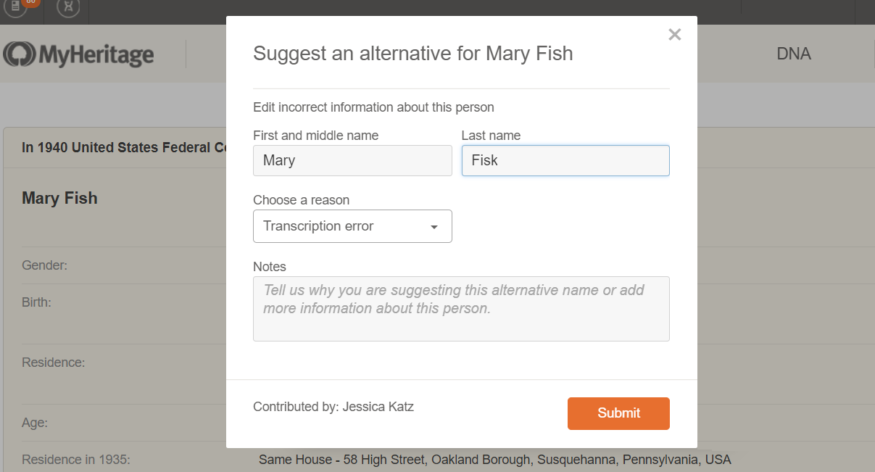

We are very excited to launch our new Suggest Alternatives feature that allows MyHeritage users to correct mistranscribed or misspelled names in historical records on SuperSearch™. In this article, we provide an overview of record transcription challenges, explain how you can fix errors that you encounter by using this new feature, and provide real-life examples that illustrate the beneficial impact that your contributions can have on the entire genealogical community.
“To Err is Human” — An Overview of Transcription Challenges
All of us have encountered historical records that are riddled with errors — people make mistakes! But why are there so many errors in historical records? Back in the old days, all documents were handwritten, and the documents that survived are often written in handwriting that is very difficult to read by today’s standards. Computers and spellcheckers didn’t exist yet. Years later, companies like MyHeritage have been transcribing the records and creating a searchable index for them. This process involves deciphering very difficult handwriting, which often leads to mistakes. Sometimes, the mistakes aren’t even ours, but they are the fault of the clerks who wrote the documents. Some vital records include incorrect information because for various reasons, people intentionally lied about certain facts such as their age.

Transcribe this! An example of handwriting that is challenging to decipher, in an old church record from Canada
For illustration, imagine a clerk at the port in Hamburg, Germany, who assists a Polish emigrant about to board a ship bound for the United States. The emigrant provides travel documents to the clerk for the passenger manifest, but due to language and cultural barriers, the clerk misspells the passenger’s name, since the name is unfamiliar to him. Then, 100 years later, an indexing professional working for MyHeritage is unable to read what the original clerk wrote, and transcribes it incorrectly, resulting in a double error.
Sometimes, a historical record has someone’s name spelled correctly, but the transcriber entered the name wrong, due to illegible handwriting on the record, or human error. At MyHeritage, we commission and supervise the work of offshore teams that manually transcribe hundreds of millions of records for us each year. Due to the manual process and all the reasons mentioned above, transcription errors sometimes occur.
The staff doing the transcription may also lack a cultural understanding of some of the names in the records. For example, imagine that there is an Italian passenger who arrived in the USA, and her name is being transcribed by an experienced transcriber from India who has no familiarity with Italian names — in this case, they may transcribe the names on the records incorrectly. The staff oftentimes cannot be culturally fluent in every culture around the world and thus, mistakes happen.
The main problem that mistakes like this create, is that if there is an important record with a mistranscribed name, and a genealogist is looking for an ancestor with the right name, he or she may not find the record because most people search for records by name. Sometimes, there are mistakes in names that the MyHeritage search engine can easily overcome. For example, if your relative’s last name is “Rasmussen” but it is transcribed incorrectly as “Rasmusson,” the search engine will still find the record because of phonetic similarity. However, other types of mistakes can be so unpredictable that a search engine cannot overcome them.
For example, if you are searching for members of a certain Fisk family in a census collection, but they were mistranscribed as “Fish,” it would be virtually impossible to find their record. That’s actually a real example. In the record below, “Mary Fisk” was incorrectly transcribed as “Mary Fish” in the 1940 United States Federal Census collection on MyHeritage.
The transcriber for this record wasn’t paying close attention! Mary and two of her siblings should have also been transcribed as “Fisk” (like the correct transcription of her parents) and not as “Fish.” The transcription here is not only incorrect, but it’s also inconsistent!
If you look closely at the actual record, the “k” in Fisk, could easily be misinterpreted as an “h” in a transcription, which is exactly what happened here. It’s easy to understand how mistakes can happen with transcriptions, especially when it comes to human errors and awful handwriting.
Interestingly enough, this entire family does appear in the 1930 United States Federal Census collection on MyHeritage, and this time, their names were all transcribed correctly as “Fisk.”
Examples
Below is an example of a misspelled name in the BillionGraves collection of gravestones on MyHeritage. A user (who is actually one of our genealogy experts, Daniel Horowitz) suggested that Hyman Posenberg should be correctly transcribed as Hyman Rosenberg:
The image of the grave below shows that the correct spelling of the name is in fact “Hyman Rosenberg”. The mistake is understandable. As with many graves, the elements have taken their toll on this gravestone and the capital R has, in fact, eroded a bit to resemble the letter “P.”
Another example of a mistake in a record is a census record for Mary Cubitt Francis in the 1860 England & Wales Census collection. Mary was incorrectly transcribed as “Mary Cnlitt Francis” and a kind MyHeritage user suggested an alternative name for her using our new feature:
If you take a closer look at the actual census record, it has Mary Cubitt Francis’s name spelled correctly, although it is easy to misinterpret the handwriting.
The New Suggest Alternatives Feature
As we’ve shown above, mistakes in historical records abound, but now you can actually do something about it! Until now, whenever you encountered a mistake in a record, you couldn’t fix it. You could acknowledge the error and use that record, but could not pass on your knowledge to other users in the genealogical community. With our new feature, you can now fix those mistakes when you encounter them immediately on SuperSearch™. This is what Do-it-Yourself Record Fixing is all about.
It’s important to note that any suggested alternative names will not replace the current name in the transcription, it will be done in addition. It will be indexed as a synonym and even if you submit an incorrect suggestion (due to yet another human error!), another user can submit a correct suggestion. People can contribute multiple name suggestions to a single record.
You can suggest alternative names in collections like census, birth, marriage and death records, passenger lists, military records, and more. All structured records that have name fields can now be fixed.
If you encounter a record in SuperSearch and you realize that there is a mistake, either because you understand the handwriting better, or because you have personal knowledge about that person, then you can correct the mistake and suggest the correct form of the last name, first name, or both, for any person in almost any record. Your contribution will be a tremendous help to the MyHeritage community because your correction will be automatically indexed once a week into the MyHeritage search engine. Other users will be able to find that record when they search using the correct name, whereas previously, they had to actually guess what the wrong name was if they wanted to find that record.
How to Fix a Name in a Historical Record
To correct a name associated with a record, click “Suggest an alternative” which is found at the bottom of almost every record.
If you are viewing a census record, you will typically see a list of several names associated with that record, residing in the same household or address. See the example for the Fisk family below:
When there are multiple names associated with a record, a drop-down menu with names will appear after you click “Suggest an alternative.” Select the name of the person in the list that you would like to fix.
If you are fixing a record that involves a family and has many names attached to it, we recommend you fix all of their names if, for example, their surname is misspelled.
If the record is only associated with one person, you won’t need to make any name selection.
Once you’ve selected a name (if applicable), a dialog will open for submitting your fixes.
Enter the correct names as you think they should be. Then choose a reason to explain why you are suggesting the alternative name.
The Notes field is important and allows you to explain to other users the additional knowledge you have about that person or the reason you are confident that your fix is correct.
For example, “Mary Fisk was my great-aunt and she was incorrectly transcribed here as Mary Fish.” When you’re done, click “Submit.”
What Happens After You Suggest an Alternative Name?
After you’ve added an alternative name, it will be saved immediately into the system, and MyHeritage will automatically process it once a week so that the search engine will allow finding that record using the new name that you contributed. The alternative name that you suggested will appear at the top of the record page below the original transcribed name.
Some records, such as census records, will display a convenient list of suggested names attached to that record, as in the example below:
In addition, in records with suggested alternatives, a new section is added named “Alternatives contributed by MyHeritage members.” This section displays the original name in the record, the suggested alternative, the reason for the suggested change, notes that were added (if applicable), and most importantly, it gives credit to the user who contributed each fix.
You may edit any suggestion you previously made or add changes at any time by clicking the pencil icon. You may also delete your suggested alternative in case you made a mistake by clicking the trash can icon.
After you’ve submitted a suggestion, other users interested in that record may contact you via MyHeritage (if allowed in your privacy settings). Obviously, your contact information is never revealed to anyone, only your member name. Similarly, if you are viewing a record with a name alternative contributed by another user, you will be able to see their member name. You will also have the ability to contact them, if their privacy settings do not forbid it.
It could be very helpful to get in touch with the person who contributed the suggestion because that person is surely knowledgeable about the person or family in the record, and they could be related to you if they have an interest in the same record as you.
If you hover the mouse cursor over the Note icon, a tooltip will appear displaying the submitter’s notes.
Every suggested alternative name will become searchable by all users of MyHeritage within a few days through an automatic process that happens every week.
Suggested alternatives also appear in search results. For example, if someone searches for the correct name “Mary Fisk” in the 1940 United States Federal Census, thanks to the suggested alternative, they will now be able to find her relevant record.
Additional Notes
There are a few collections in which the ability to suggest alternatives is disabled, such as text collections (Newspapers, Books, etc.) and Family Tree collections. Newspapers and books are typically handled through OCR (Optical Character Recognition) processes and not manual transcription. At a later stage, we plan to add the ability to annotate any word in such collections, and not just names. In the Family Tree collections, we don’t allow you to fix a record because they are a copy of someone’s active tree, which you cannot modify. What we recommend instead, is that if you spot an error in someone’s tree, contact the tree owner and point out the error to them, so that they can fix the mistake in their tree, and the fix will propagate to the search engine automatically. This will nip the error in its bud instead of fixing the symptom but not the cause.
What kind of mistakes can you and should you fix using this new feature? We recommend that you use this feature to fix mistakes in names, and avoid using it to add other information known only to you that does not appear in the record. This will reduce the risk of misleading other researchers in case you suggest additional information about the wrong person. For example, if you look at a death record and you want to add a marriage date and spouse’s name based on your knowledge, don’t use the Suggest Alternative feature for that. Instead, you can contribute this information in a comment.
Suggesting alternatives is a free feature that anyone can use, but it should be noted, that you can only suggest an alternative if you can access the record, and some MyHeritage records are only available to subscribers with a Data or a Complete subscription.
Fixing names is only the beginning. This is the first phase of a more powerful record annotation feature that we intend to release in stages. If we see that this feature is very useful to a large number of our users, we will expedite the implementation of the next phases in which we will allow you to correct mistakes in other information fields in historical records, such as dates, places, household designations, occupations, ages, and more.
Summary
We’re excited to release this feature and allow MyHeritage users to fix erroneous names in historical records to help the genealogical community find more information about their relatives. We hope that thanks to this feature and your help, the billions of records on MyHeritage will become more accurate and more useful to genealogists every day.
Enjoy!
MyHeritage Team
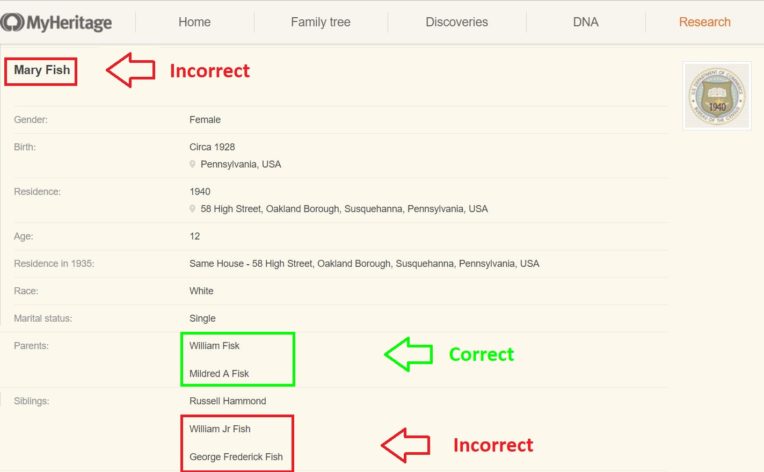
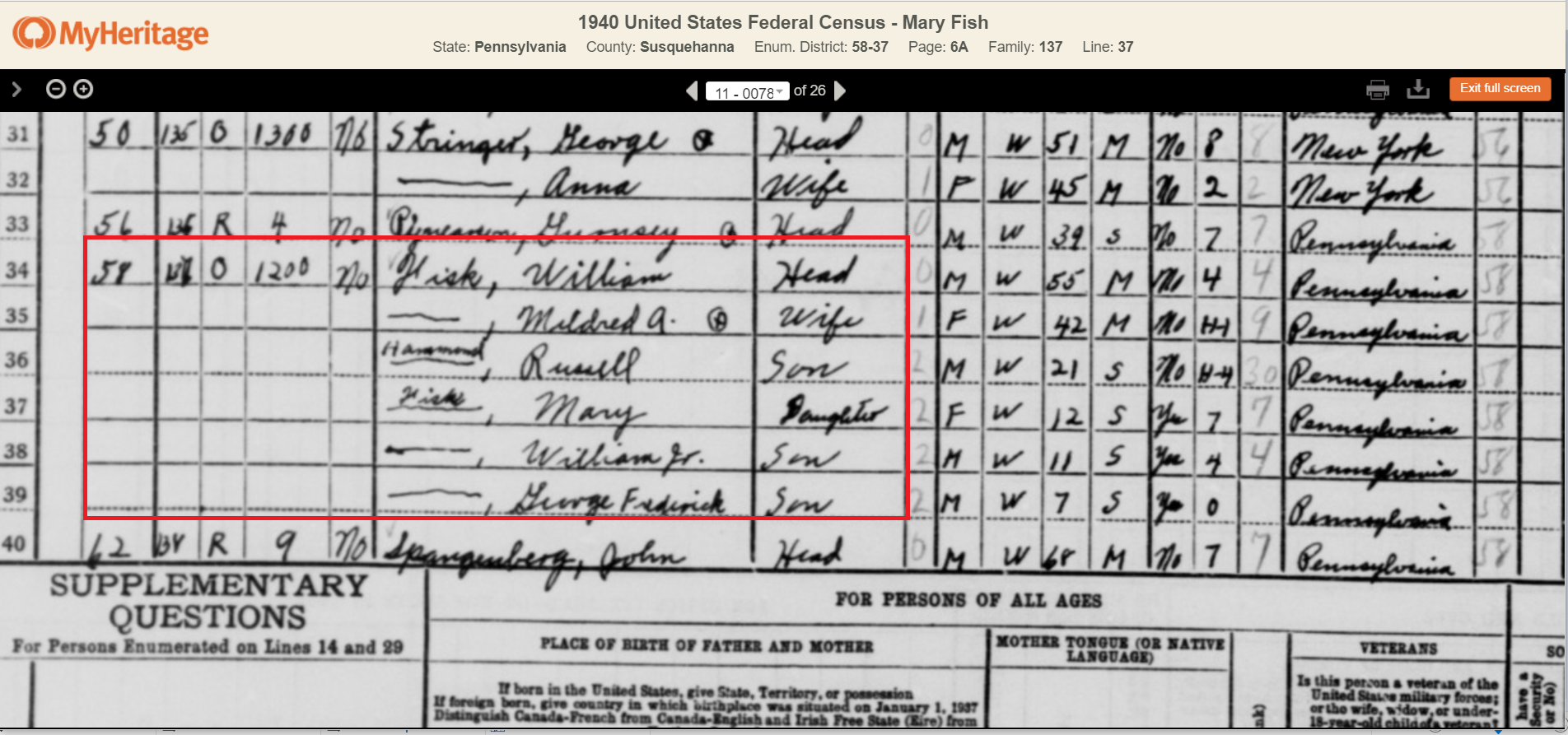

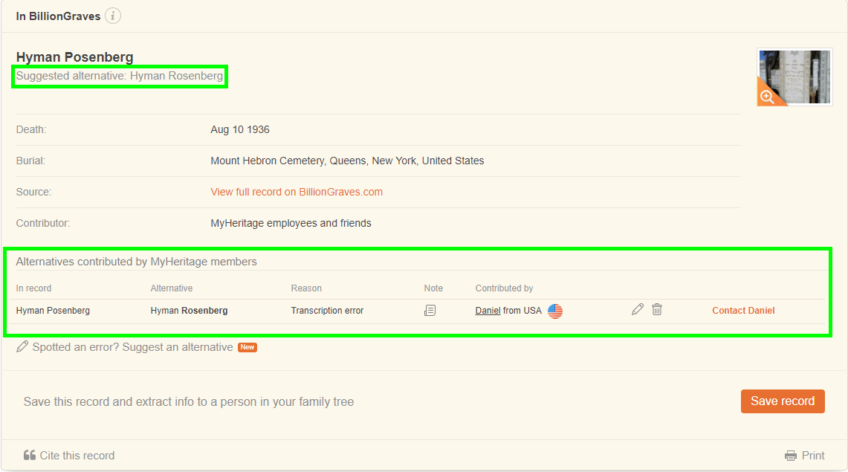
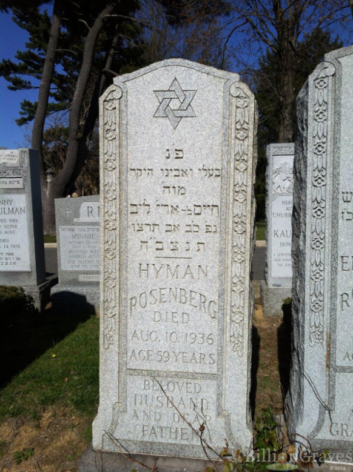


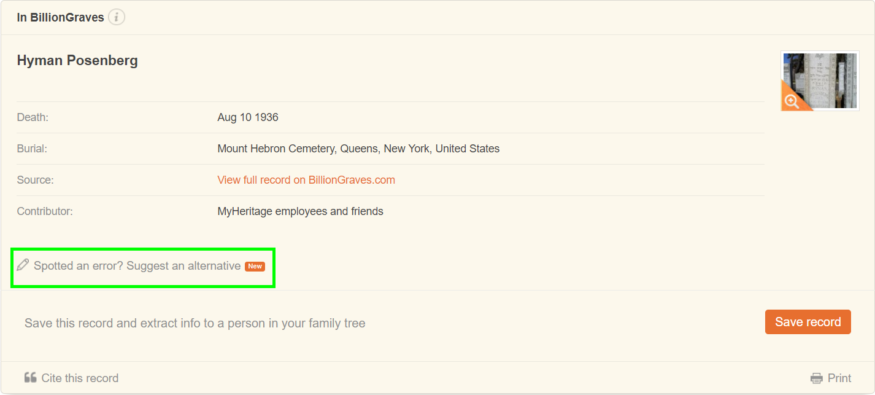
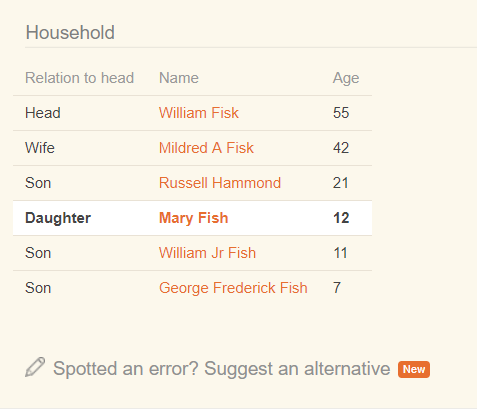

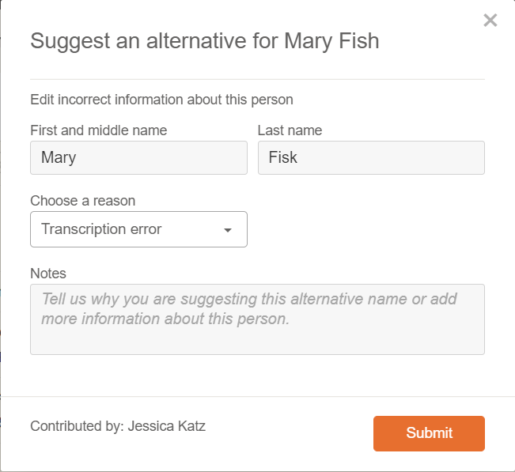
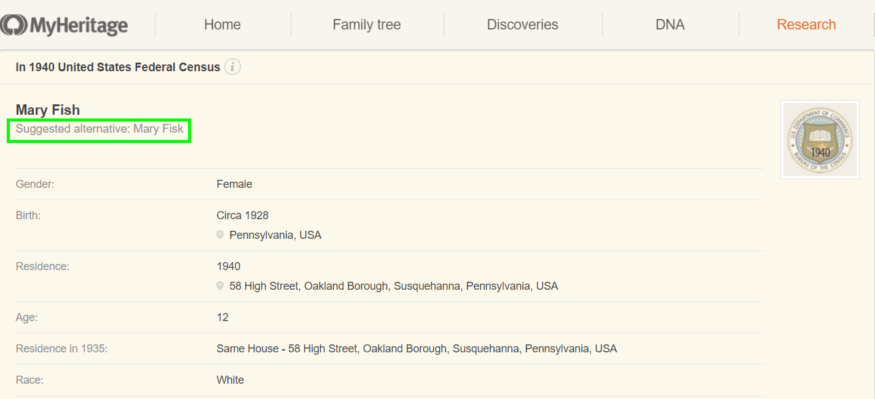
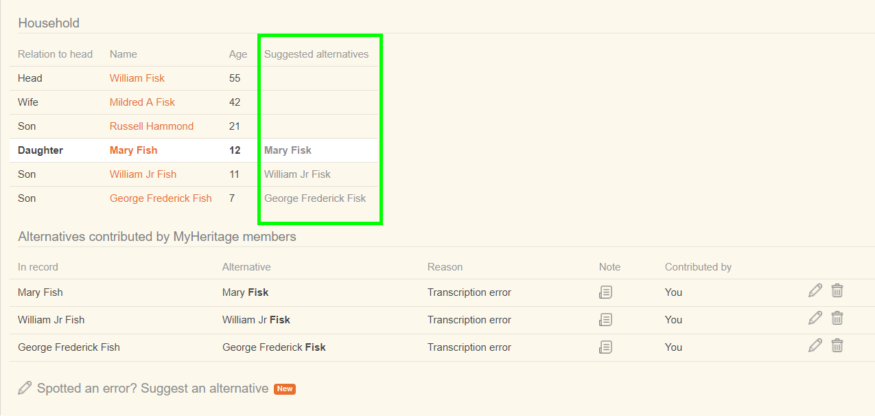

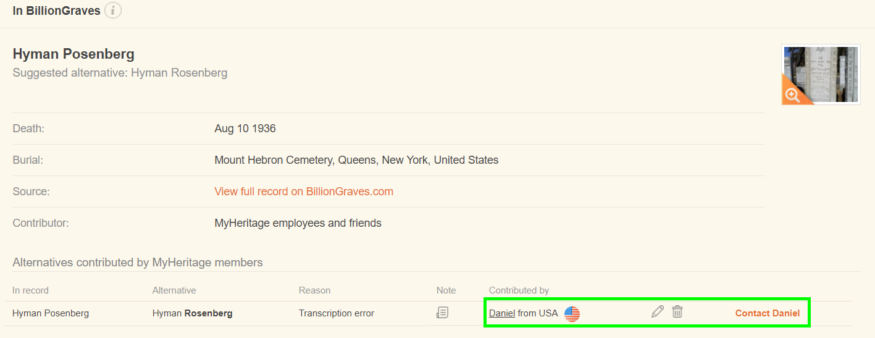
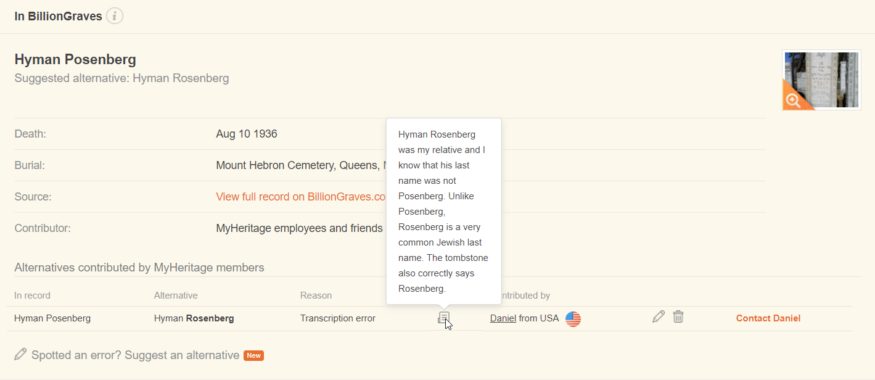





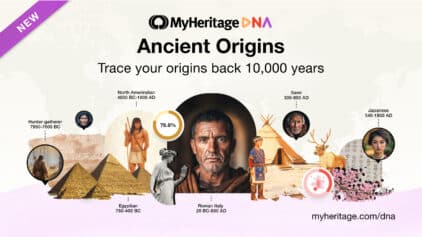


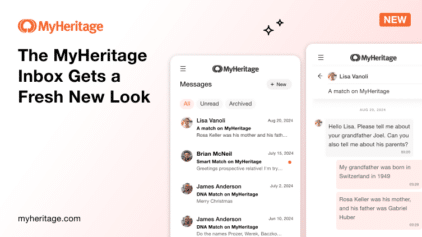
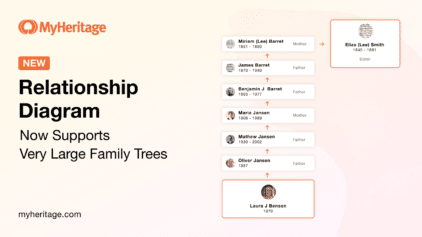

Fay Goring
November 29, 2017
Very exciting news.